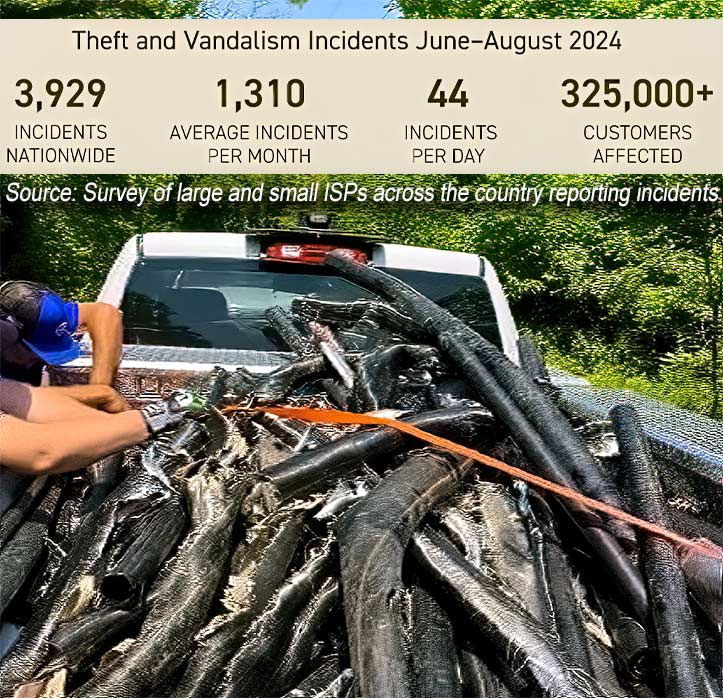
While fluctuations in copper futures prices might suggest a correlation with theft rates, evidence indicates that many copper thefts are primarily driven by individuals seeking quick cash to support drug addictions, rather than by market dynamics. Four industry associations are fighting the rise of theft and vandalism.
In an increasingly connected world, the U.S. communications infrastructure serves as the backbone of national security, economic stability, and daily life. Yet, this critical network faces escalating threats from theft and vandalism, jeopardizing essential services and public safety.
To combat it, four industry associations have released a white paper entitled: Protecting the Nation’s Critical Communications Infrastructure from Theft & Vandalism. NCTA – The Internet & Television Association, CTIA, USTelecom – The Broadband Association and NTCA – The Rural Broadband Association, have jointly said Global demand for copper is a major driving force for these crimes, with the metal’s price soaring in recent years
The report delves into the alarming rise of these incidents, examining their causes, impacts, and solutions. With nearly 4,000 reported cases in a three-month span of 2024 alone, the stakes are higher than ever. Beyond disrupting phone and internet services, these acts can sever connections vital to public safety, healthcare, transportation, and emergency response.
Key insights of the report include:
- The economic drivers behind copper theft, a primary motivator for these crimes.
- The wide-reaching consequences of infrastructure disruptions, from delayed 911 responses to economic losses for businesses.
- The need for a unified response involving communications providers, the scrap metal industry, law enforcement, and policymakers.
The paper also highlights proactive measures already in place, such as enhanced security technologies, stricter regulations on scrap metal sales, and partnerships between industry leaders and local governments. However, the authors emphasize that a more comprehensive, coordinated strategy is essential to protect these vital networks.
This is not just a challenge for the communications industry—it is a public safety issue that demands immediate attention and action at all levels.
For lawmakers, regulators, and industry stakeholders, this white paper provides a roadmap to address the vulnerabilities and ensure the resilience of our nation’s communications infrastructure.

















